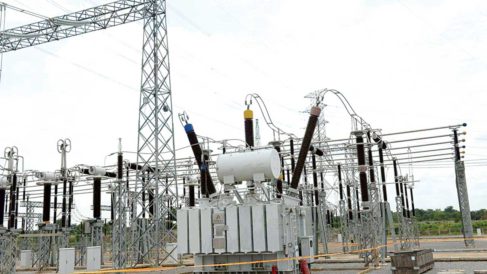Power distributors’ revenue collection rises to N473bn
 The revenue collected by power distribution companies in the county hit a new record high of N473bn in 2019.
The revenue collected by power distribution companies in the county hit a new record high of N473bn in 2019.
The revenue collection in 2019 rose by N35bn or eight per cent, compared to that of 2018, a report obtained from the Association of Nigerian Electricity Distributors showed on Monday.
ANED, an umbrella body for the Discos, said the energy wheeled by the Transmission Company of Nigeria only increased by one per cent, adding that the allowed end-user tariff remained at an average of N32.5 per kilowatt-hour average since 2016.
It said the energy received last year increased to 26,630 gigawatt-hours from 26,385 GWh in 2018, while the energy billed rose to 21,702 GWh (an equivalent of N695bn) from 20,852 GWh (N662bn).
The group said the Discos’ collection achieved a new record of N42.1bn in December, and the collection efficiency for the fourth quarter set a new record of 71.4 per cent.
It said, “The aggregate technical, commercial and collection loss (moving average) keeps improving and it is now at 44.6 per cent, although it is still far from Ikeja Electric’s new record (22 per cent in December 2019).
“Nevertheless, a few Discos are showing symptoms of fatigue in their ATC&C loss reductions, with a Disco deteriorating by a moving average of 4.7 points in 2019. Hopefully, this situation will revert soon and will not follow the path of Yola Electricity Distribution Company.”
On July 2015, the Federal Government took over Yola Electricity Distribution Company following the exit of the core investor after it declared a force majeure, citing insecurity in the North-East region of the country.
According to ANED, Yola Disco has not been in control of its ATC&C losses for the last three years and will probably end the year at over 70 per cent in ATC&C losses.
It said the energy to be received by the Discos continued to be flat, low and far from any of the projections by the Nigerian Electricity Regulatory Commission under the Multi-Year Tariff Order financial model.
ANED said, “In the last minor review of December to January, NERC dropped its previous projection for 2020 from 123,000 megawatt-hour per day down to 96,000 MWh/day (an almost 30 per cent downward review), which is the main reason for increasing the forecasted tariff shortfall for 2020 to N534bn (N426bn compared to 2019 June’s minor review).
“The number of registered end-users in the Nigerian electricity supply industry keeps increasing, currently at a rate of about 75,000 new customers per month (10 per cent in 2019, resulting in more than 9.5 million customers in total).”
According to the Discos, delays/barriers in the implementation of the Meter Asset Provider Regulation is making the metering gap to grow, with almost a 59.4 per cent of the end-users unmetered.
On March 8, 2018, NERC approved the MAP Regulation, aimed at fast-tracking the closure of the metering gap in the sector through the engagement of third-party investors for the financing, procurement, supply, installation and maintenance of electricity meters.
The commission, which set a target of metering all customers within three years, directed the Discos and the meter asset providers to commence the roll-out of meters not later than May 1, 2019.
It added that customers should expect meters to be installed on their premises within 10 working days of making payment to MAPs.








